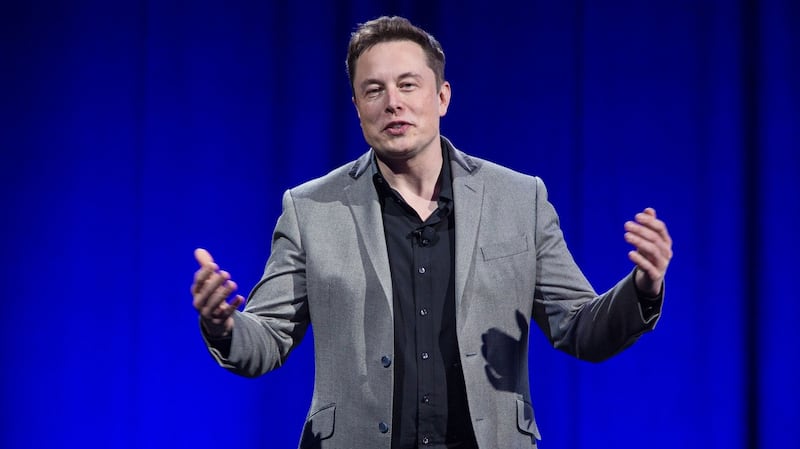You’re a successful entrepreneur, driving your new business hard. You of course routinely check in with your bank manager, and bring him up to date on the progress of your business and your plans for the rest of the year. He then asks “And so, where specifically will you be in terms of capital requirements?”.
I doubt whether you would answer: "Boring, bonehead questions are not cool. Next?". Nevertheless that is how Tesla's Elon Musk answered Toni Sacconaghi, at the investment house Sanford Bernstein. The dialogue was a part of the quarterly conference phone call hosted by Tesla to discuss its first-quarter 2018 earnings and was attended by a hundred or so analysts and investors.
Sacconaghi is not Musk’s bank manager, but he is a highly respected research analyst, whose opinion could influence Tesla’s lenders. Tesla currently has about €2.9 billion in cash available, but has debt with various maturity dates totalling €7.9 billion. In the first quarter of 2018, the company had to pay out €122 million in interest payments.
Tesla also spent about €840 million during the quarter. Bloomberg has calculated that Tesla is currently spending about €6,200 every minute, of every day. Cash burn is nevertheless expected to further increase as Tesla ramps its production of its new Model 3 sedan.
Some research analysts, such as Bruce Clark of Moody's Investors Service, strongly suspect that Tesla will need to find access to another €1.75 billion or so before the end of the year. But adding further to the already substantial debt load would be a challenge.
Raise cash
However rather than raising further debt, it is reasonably straight forward for the publicly quoted Tesla to raise more capital by issuing and selling further shares on the Nasdaq stock exchange. But the stock has fallen by 24 per cent since its high point of €326 in September last year.
Selling equity to raise cash now would thus be more expensive than it might otherwise have been, and the quarterly conference call spat further deteriorated the stock price.
Musk asserted during the conference call that in fact he specifically does not want to raise yet further cash. Some commentators – such as Matthew DeBord at Business Insider – are surprised.
Nevertheless Tesla has used a few other tricks to raise capital.
The Board of Tesla are clearly concerned by Musk's eclectic volatility. Despite Tesla's deepening challenges, Musk does not give the company his full attention
It does not use a network of third-party resellers – car distributorships – to reach its market. Rather, it sells directly to the public. In particular, it takes cash deposits from customers well before they receive delivery of their vehicle. Currently, Tesla has €825 million advanced by customers and, unlike its debt raised from lenders, this is interest free. In some cases, customers have paid deposits for a feature which Tesla admits it does not yet understand how to engineer: a fully self-driving capability. Should Tesla ever fail as a company, or be acquired by another, there is some risk that the cash advanced to it by its customers may simply be lost.

Tesla benefits from government incentives. The State of California, where Tesla is headquartered and where its Fremont manufacturing plant is located, has a zero emission vehicle mandate. Electric vehicles are given credits for zero emissions. Car manufacturers are encouraged to move their models to electric from fossil fuels, and polluting manufacturers have to purchase credits as a penalty. In 2017, Tesla earned €301 million from its credits which it sold to other manufacturers.
Government incentives
Tesla customers have also benefited from government incentives. Under a federal scheme, each electric car purchased yields a €6,300 tax credit to the customer. However, the credit is phased out after the first 200,000 cars sold by the manufacturer concerned, and Tesla is likely to reach this threshold during the summer.
Most technology investors are much more interested in product-focused companies, than those only offering services. The issue is that offering more services requires hiring more employees, so that costs rise in direct proportion to revenues. Product-focused companies can often break the dependency: as revenues rise, costs do not rise as quickly, and so greater proportions of profits result.
In the case of Tesla, Musk has asserted that the Fremont plant will be highly automated. Scaling production to higher volumes of output will thus not require additional workforce. In practice, Musk's vision appears very distant. Tesla has 40,000 staff, and a further 3,000 job openings. Its average annual revenue per employee is just €290,000. General Motors and Ford, in comparison, are well over twice as productive.
The Board of Tesla are clearly concerned by Musk’s eclectic volatility. Despite Tesla’s deepening challenges, Musk does not give the company his full attention. SpaceX has just raised €425 million, and has its own challenges over the safety of its new massive Falcon 9 rocket. Musk’s “The Boring Company” has just raised €110 million for its tunnel infrastructure technology. The Tesla board have thus tried to retain Musk’s attention by offering him €2.2 billion worth of stock options, provided Tesla reaches certain targets.
Entrepreneurs are creative and dynamic, especially when it comes to finding cash for their business. Boards, especially non-executive directors, can become exasperated by the hyperactivity of their CEO and/or chairman. A core rule, however, should be “no surprises”. Boards, investors and customers should be warned well in advance of both potential good and bad news.














